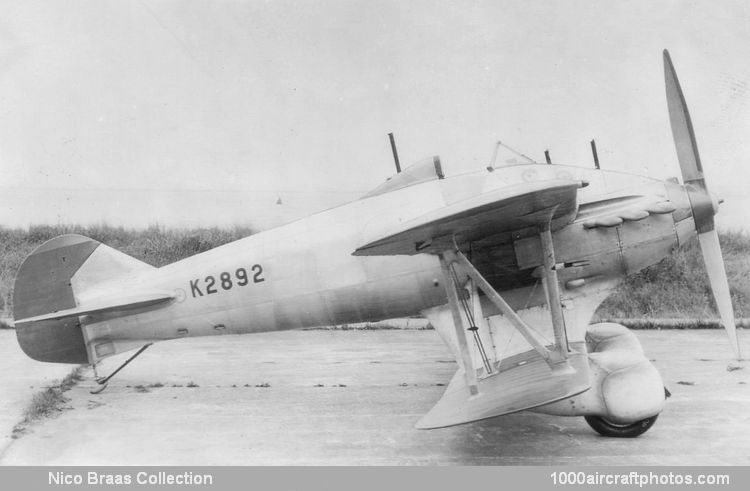Blackburn F.7/30, serial K2892
Bristol 133, 'Class B' marking R-10
Gloster S.S.37, serial K5200
Hawker P.V.3, 'Class B' marking I-PV3
Supermarine 224, serial K2890
Vickers 151 Jockey, serial J9122
Westland P.V.4, serial K2891
Powered by a 660 hp Rolls-Royce Goshawk Mk.III twelve-cylinder steam-cooled V-engine, the Blackburn entrant (sometimes referred to as the F.3) was the most unorthodox of the prototypes constructed. Designed by George E. Petty, the biplane had the engine located in the normal nose position but the pilot sat high in the middle of the upper wing's center section, and the radiator filled the gap between the fuselage and the lower wing. The sleek fuselage was completely metal-skinned but fabric was used to cover the flying surf aces.
The Blackburn F.7/30's armament of four Vickers guns was disposed in the nose, two being above the engine and two below it. The landing gear installation was commendably clean, both a tail skid and tail wheel being tried.
The radical layout of K2892 furnished the pilot with a remarkably fine view but miserably poor protection in the event of nosing-over. When ground tests were commenced the Goshawk developed cooling difficulties, while the landing gear proved instability. In spite of the amount of work involved in creating the Blackburn F.7/30, it was never flown and finally found its way to Halton for use as a ground instruction airframe.
In the event the Gloster entry was ordered into production to Specification F.14/35, and was named Gladiator Mk.I."
